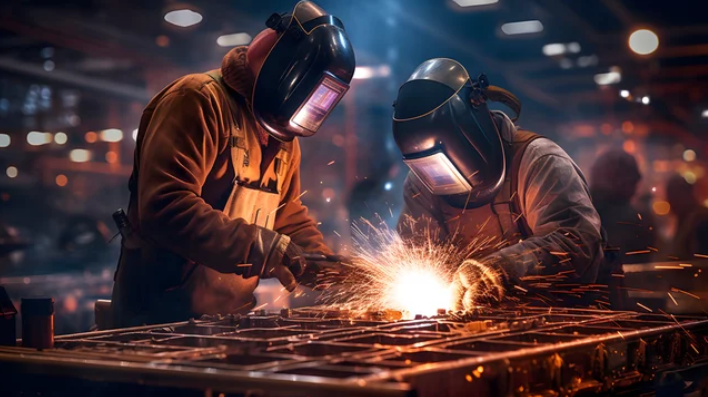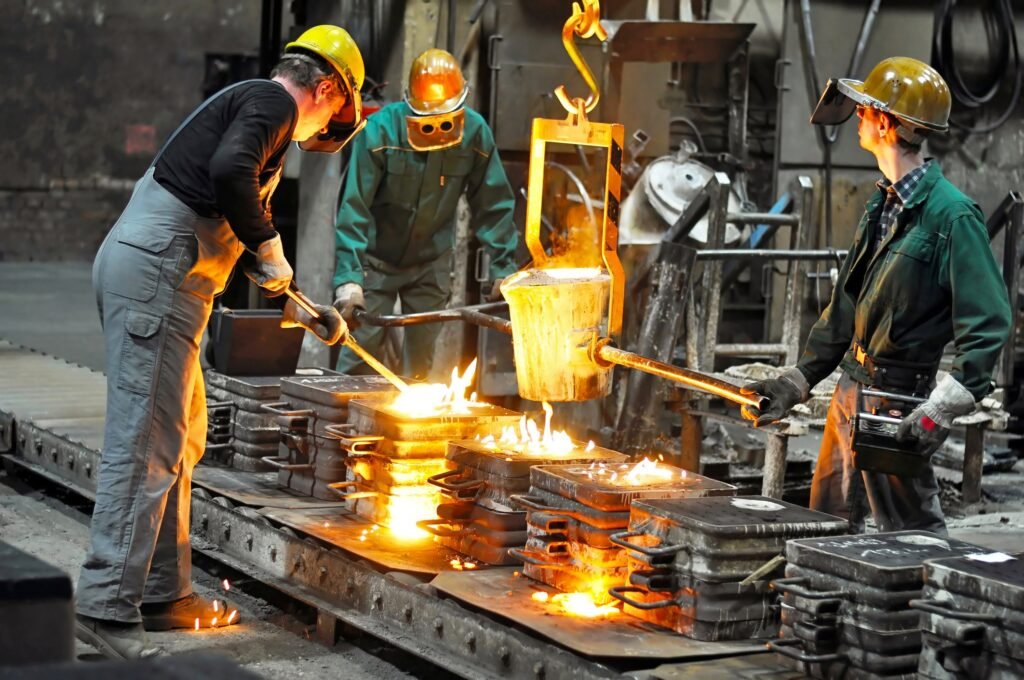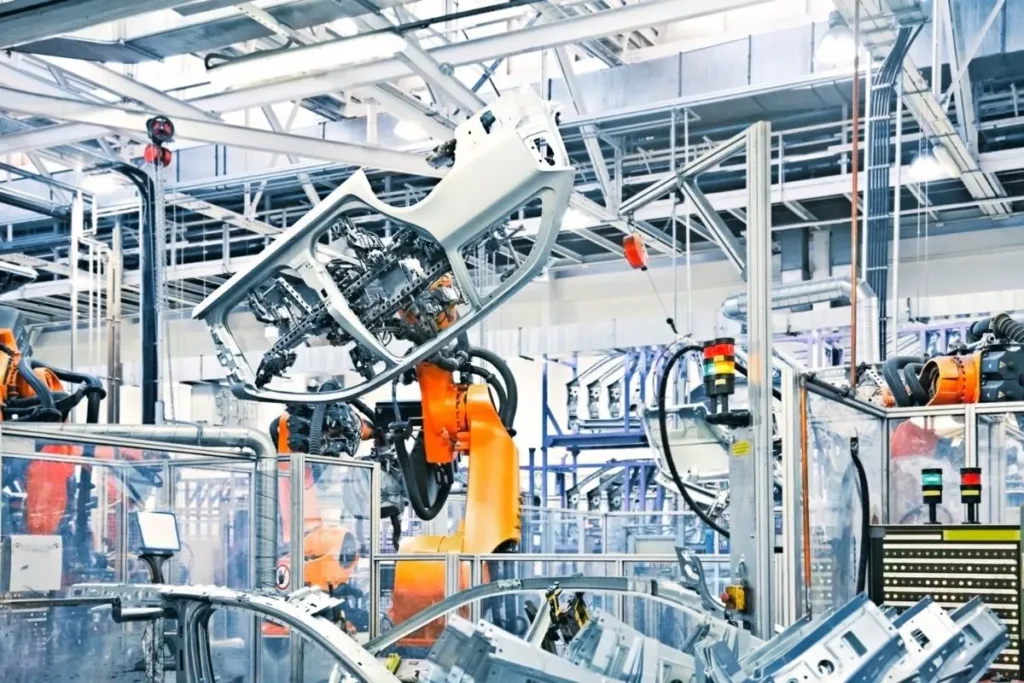Quality Control in Metal Fabrication in On-Demand Manufacturing: Ensuring Excellence in Every Project
Metal fabrication is a crucial industry that plays a pivotal role in various sectors, from construction and automotive to aerospace and manufacturing. Regardless of the application, the quality of fabricated metal components is paramount to the success and safety of the end product.
This article will delve into the specifics of quality control in metal fabrication including challenges, and key measures for excellence in every project.
The Basics of Metal Fabrication
Metal fabrication involves the transformation of raw metal materials into finished products or components through processes like cutting, bending, welding, and assembling. Common metals used in fabrication include steel, aluminium, and copper. This industry serves diverse applications, including constructing skyscrapers, manufacturing automobiles, and crafting precision instruments.

The Role of Quality Control in Metal Fabrication
Quality control (QC) in metal fabrication refers to the systematic processes and procedures put in place to monitor and maintain the quality and consistency of fabricated metal components. It’s a critical aspect of ensuring the end product’s safety, durability, and functionality.
Metal Fabrication in On-Demand Manufacturing
Precision and quality control take centre stage in the fast-paced world of on-demand manufacturing. From aerospace components to medical devices and consumer goods, the demand for high-quality metal fabrication is ever on the rise.
On-demand manufacturing, often referred to as “just-in-time” manufacturing, is a production approach that focuses on creating products as they are needed, rather than producing large quantities in advance. This method is highly flexible and caters to the specific requirements of customers. It’s becoming increasingly popular due to reduced waste, lower inventory costs, and the ability to respond quickly to market changes.
The Role of Quality Control in On-Demand Manufacturing
Challenges in Implementing Metal Fabrication Quality Control in On-Demand Manufacturing
Implementing quality control in metal fabrication comes with its share of challenges.
- Variability in material selection can make it challenging for manufacturers to maintain a consistent quality standard, as each material may require different fabrication techniques and quality control processes.
- Rapid turnaround times can lead to subpar products that ultimately damage the company’s reputation.
- In on-demand manufacturing, the demand for highly skilled fabricators is particularly high, ensuring that there are enough trained personnel to carry out quality control responsibilities can be a daunting task.
- On-demand manufacturing is all about customization, and this presents a unique challenge for quality control. While each product may be unique, the quality standards should remain consistent.
- On-demand manufacturing often operates on tight budgets, making it tempting to reduce spending on quality control.
- Modern manufacturing generates vast amounts of data, including inspection reports, production metrics, and customer feedback. Managing and analyzing this data efficiently can be challenging.
In the fast-paced world of on-demand manufacturing, quality control in metal fabrication is both a necessity and a formidable challenge. However, with strategic planning, investment in technology and training, and a commitment to maintaining consistent standards, these challenges can be successfully navigated. In doing so, manufacturers can not only meet the demands of on-demand manufacturing but also thrive in an industry that values precision and excellence.
Key Quality Control Measures in Metal Fabrication
Quality control in metal fabrication involves a range of measures, including material inspection, welding inspection, dimensional accuracy checks, surface finish inspection, and non-destructive testing (NDT) etc. Let’s check out in detail:
- Material Inspection
Before fabrication begins, thorough material inspection is essential. High-quality metals must meet stringent standards to ensure structural integrity. Visual inspection is the simplest and most fundamental quality control technique in metal fabrication. Skilled inspectors visually assess metal components for defects such as surface imperfections, cracks, weld discontinuities, and dimensional irregularities. The use of proper lighting and magnification aids can enhance the accuracy of visual inspection.
- Welding Inspection
Different welding processes, such as MIG, TIG, and stick welding, require careful inspection to ensure weld quality. Welding is a critical process in metal fabrication, and improper welding can lead to structural failures and safety hazards. Welding inspection techniques involve evaluating weld quality, including weld penetration, integrity, and conformity to welding codes and standards. Certified welding inspectors often use visual inspection, radiographic testing, and ultrasonic testing to ensure weld quality.
- Dimensional Accuracy
Precise measurements are crucial for metal components to fit and function correctly. Modern fabrication relies on advanced measuring tools like laser scanners and coordinate measuring machines. Dimensional inspection tools like callipers, micrometres, coordinate measuring machines (CMMs), and laser scanners are used to verify the dimensions of metal parts.
- Surface Finish Inspection
Surface preparation and finish inspection are essential for aesthetics, corrosion resistance, and adherence to product specifications.
- Non-Destructive Testing (NDT)
NDT techniques, such as ultrasonic testing and X-ray inspection, allow for the detection of hidden defects without damaging the component. UT uses high-frequency sound waves to detect internal flaws in metal components, including welds, castings, and forgings. RT employs X-rays or gamma rays to create images of the internal structure of metal parts, revealing defects like porosity, inclusions, or cracks. MT detects surface and near-surface defects by applying a magnetic field and examining the particles attracted to areas with magnetic flux leakage. PT involves applying a coloured liquid penetrant to the surface of a component and then using a developer to highlight defects like cracks or porosity.
- Statistical Process Control (SPC)
SPC is a statistical approach to quality control that involves monitoring and controlling the manufacturing process to maintain consistent quality. Key SPC techniques include control charts, process capability analysis, and statistical analysis of data collected during production. SPC helps identify trends, variations, and deviations from desired quality standards.
- Failure Analysis
When defects or failures occur in metal components, failure analysis is employed to determine the root cause. This involves a systematic investigation of the failed part, including metallurgical analysis, fractography, and mechanical testing. By understanding why, a failure occurred, manufacturers can implement corrective actions to prevent future issues.
- Poka-Yoke (Error Proofing)
Poka-yoke is a technique used to prevent errors and defects at the source. In metal fabrication, this can involve designing fixtures, jigs, and assembly processes that make it difficult or impossible for operators to produce defective parts. Simple examples include using alignment pins or colour-coding components to ensure correct assembly.
Standards and Regulations in Metal Fabrication Quality Control
International standards, such as ISO 9001 for quality management and ASTM standards for materials and testing, provide a framework for quality control in metal fabrication. Local regulations and codes further govern specific aspects, such as welding standards and safety protocols. Modern quality control relies on advanced inspection equipment, statistical process control (SPC) software, and quality control software systems to streamline processes, collect data, and ensure consistency.
In summary
Ensuring excellence in every project requires a commitment to meticulous inspection, adherence to standards, and embracing cutting-edge technologies. Quality control is the backbone of metal fabrication in on-demand manufacturing. It guarantees that each component meets the exact specifications, offers cost efficiency, and ensures safety and customer satisfaction. As the demand for on-demand manufacturing continues to grow, the role of quality control in metal fabrication will remain pivotal, driving innovation and excellence in this dynamic industry.
Recent Post




Quality control is the linchpin of on-demand manufacturing, especially in metal fabrication. Here’s why it’s indispensable:
- Customization
On-demand manufacturing often involves producing unique or small batches of components. To meet these highly specific requirements, quality control is essential to ensure each piece meets the exact specifications.
- Minimizing Waste
In on-demand manufacturing, there’s little room for errors. Quality control helps identify issues early in the process, reducing material waste and rework costs.
- Consistency
Maintaining consistent quality across various batches is vital, as even slight variations can affect the end product’s performance and safety.
